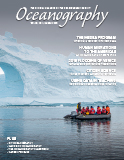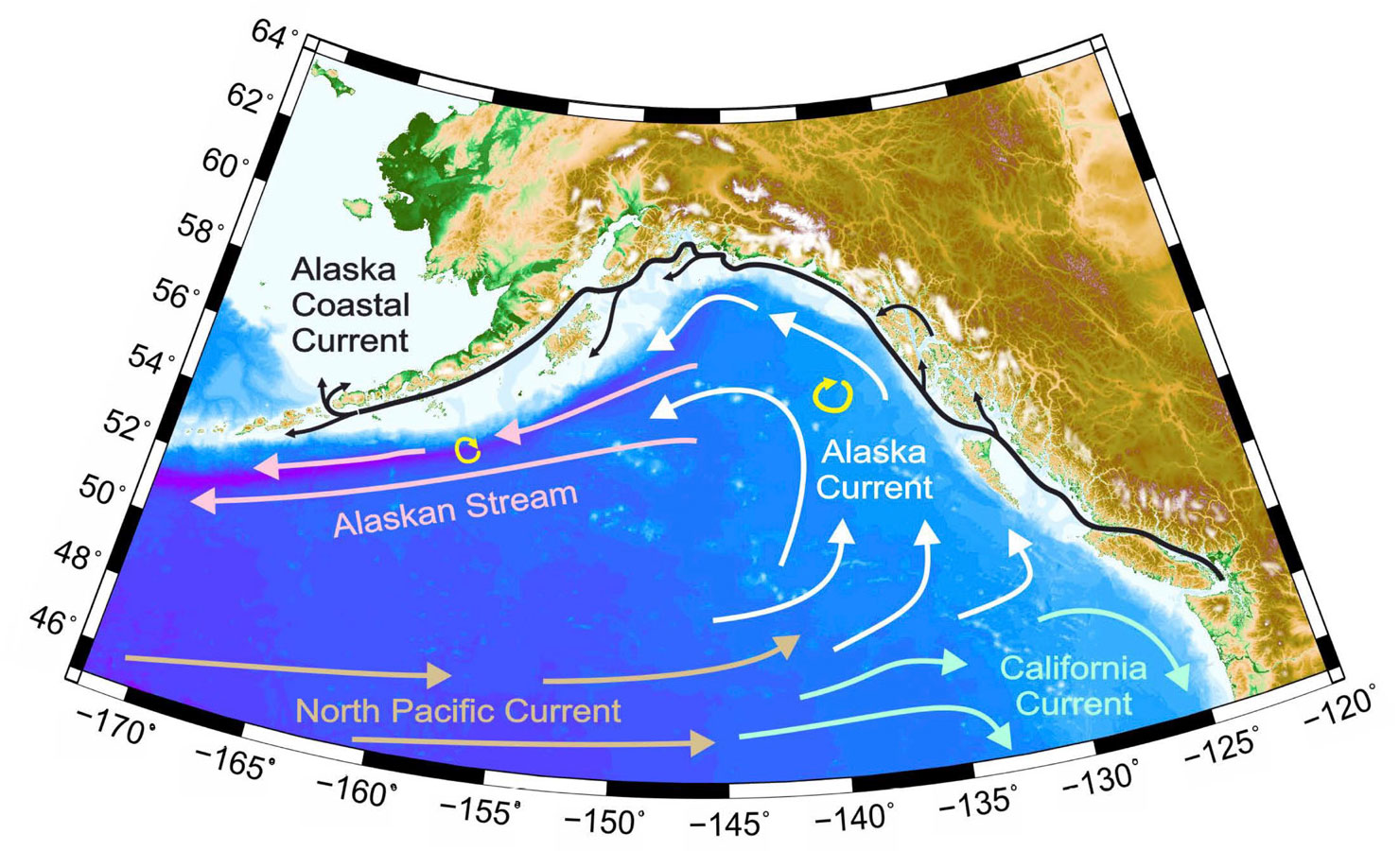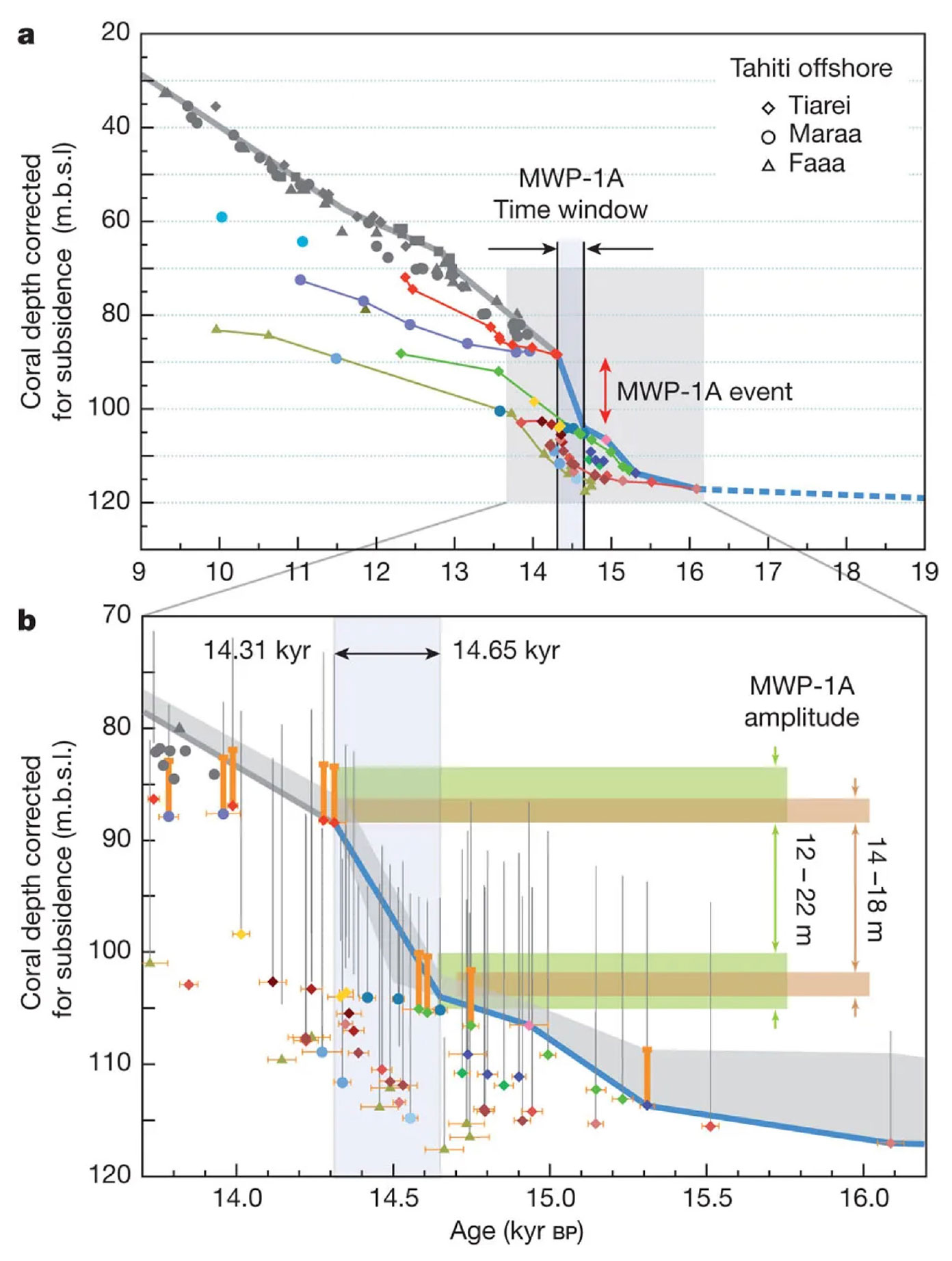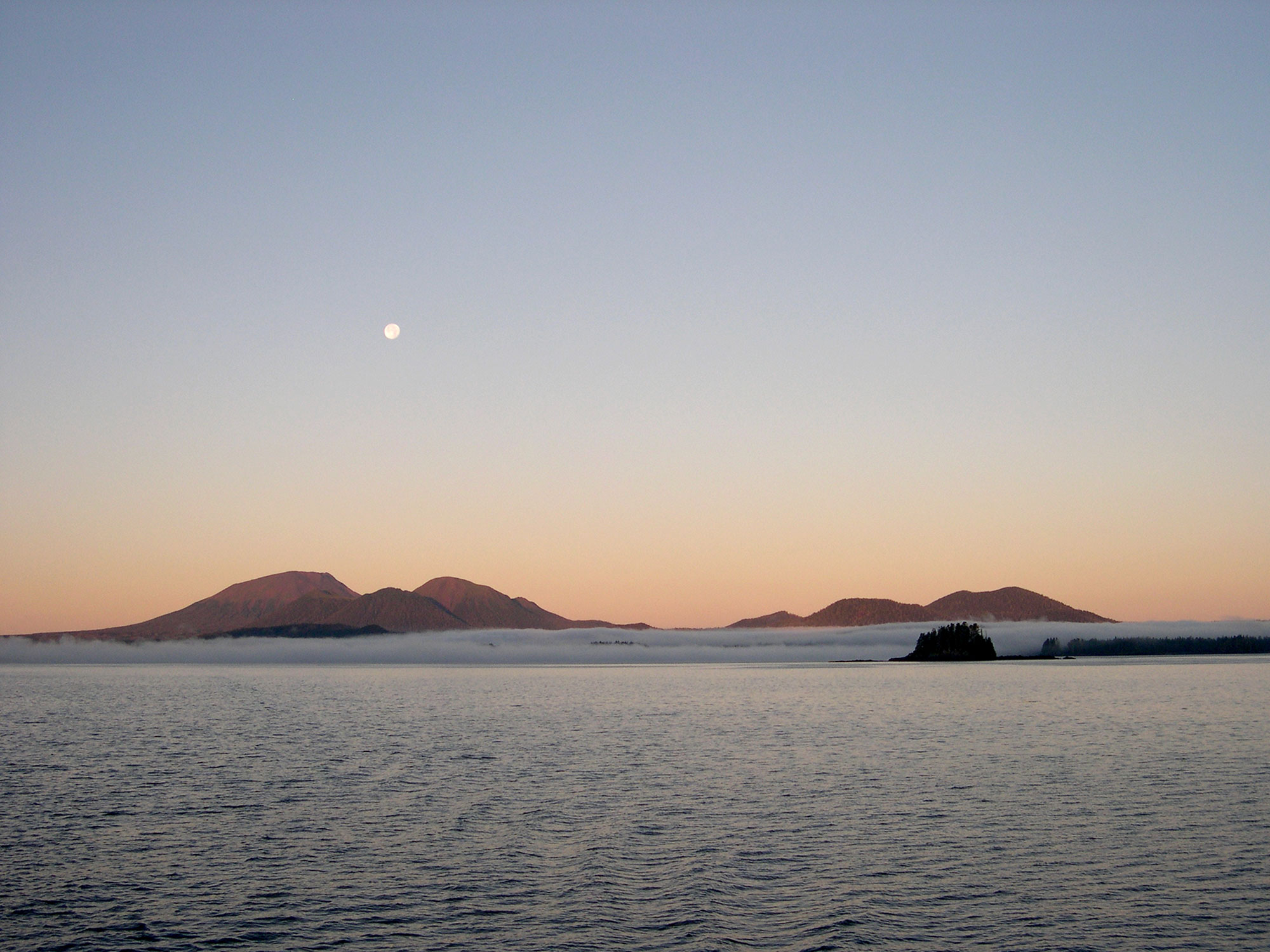Arendt, A.A., K.A. Echelmeyer, W.D. Harrison, C.S. Lingle, and V.B. Valentine. 2002. Rapid wastage of Alaska glaciers and their contribution to rising sea level. Science 287(5580):382–386, https://doi.org/10.1126/science.1072497.
Bourgeon, L., A. Burke, and T. Higham. 2017. Earliest human presence in North America dated to the Last Glacial Maximum: New radiocarbon dates from Bluefish Caves, Canada. PLOS ONE 12(1):e0169486, https://doi.org/10.1371/journal.pone.0169486.
Braje, T.J., D. Dillehay, J.M. Erlandson, R.G. Klein, and T.C. Rick. 2017. Finding the first Americans. Science 58(6363):592–594, https://doi.org/10.1126/science.aao5473.
Braje, T.J., C.R. Torben, T.D. Dillehay, J.M. Erlandson, and R.G. Klein. 2018. Arrival routes of first Americans uncertain—Response. Science 359(6381):1,225, https://doi.org/10.1126/science.aar8645.
Braje, T.J., J.M. Erlandson, T.C. Rick, L. Davis, T. Dillehay, D.W. Fedje, D. Froese, A. Gusick, Q. Mackie, D. McLaren, and others. 2019. Fladmark + 40: What have we learned about a potential Pacific coast peopling of the Americas? American Antiquity, https://doi.org/10.1017/aaq.2019.80.
Braund, S.R. 1988. The Skin Boats of Saint Lawrence Island. University of Washington Press, Seattle, WA, 121 pp.
Clague, J.J. 2009. Cordilleran ice sheet. Pp. 206–211 in Encyclopedia of Paleoclimatology and Ancient Environments. V. Gornitz, ed., Springer, Dordrecht, The Netherlands.
Darvill, C.M., B. Menounos, B.M. Goehring, O.B. Lian, and M.W. Caffee. 2018. Retreat of the western Cordilleran ice sheet margin during the last deglaciation. Geophysical Research Letters 45(18):9,710–9,720, https://doi.org/10.1029/2018GL079419.
Davies, M.H., A.C. Mix, J.S. Stoner, J.A. Addison, J. Jaeger, B. Finney, and J. Wiest. 2011. The deglacial transition on the southeastern Alaska Margin: Meltwater input, sea level rise, marine productivity, and sedimentary anoxia. Paleoceanography 26(2), https://doi.org/10.1029/2010PA002051.
Davies-Walczak, M., A.C. Mix, J.S. Stoner, J.R. Southon, M. Cheseby, and C. Xuana. 2014. Late Glacial to Holocene radiocarbon constraints on North Pacific Intermediate Water ventilation and deglacial atmospheric CO2 sources. Earth and Planetary Science Letters 397:57–66, https://doi.org/10.1016/j.epsl.2014.04.004.
Davis, L.G., D.B. Madsen, L. Becerra-Valdivia, T. Higham, D.A. Sisson, S.M. Skinner, D. Stueber. A.J. Nyers, A. Keen-Zebert, C. Neudorf, and others. 2019. Late Upper Paleolithic occupation at Cooper’s Ferry, Idaho, USA, ~16,000 years ago. Science 365(6456):891–897, https://doi.org/10.1126/science.aax9830.
Deschamps, P., N. Durand, E. Bard, B. Hamelin, G. Camoin, A.L. Thomas, G.M. Henderson, J. Okuno, and Y. Yokoyama. 2012. Ice-sheet collapse and sea-level rise at the Bølling warming 14,600 years ago. Nature 483:559–564, https://doi.org/10.1038/nature10902.
Dixon, E.J. 2000. Bones, Boats & Bison: Archeology and the First Colonization of Western North America. University of New Mexico Press, Albuquerque, 322 pp.
Dixon, E.J., and K. Monteleone. 2014. Gateway to the Americas: Underwater archeological survey in Beringia and the North Pacific. Pp. 95–114 in Prehistoric Archaeology on the Continental Shelf. A.M. Evans, J.C. Flatman, and N.C. Flemming, eds, Springer, New York.
Erlandson, J.M., M.H. Graham, B.J. Bourque, D. Corbett, J.A. Estes, and R.S. Steneck. 2007. The kelp highway hypothesis: Marine ecology, the coastal migration theory, and the peopling of the Americas. Journal of Island and Coastal Archaeology 2:161–174, https://doi.org/10.1080/15564890701628612.
Erlandson, J.M., M.L. Moss, and M. Des Lauriers. 2008. Life on the edge: Early maritime cultures of the Pacific Coast of North America. Quaternary Science Reviews 27(23–24):2,232–2,245, https://doi.org/10.1016/j.quascirev.2008.08.014.
Erlandson, J.M., and T.J. Braje. 2011. From Asia to the Americas by boat? Paleogeography, paleoecology, and stemmed points of the Northwest Pacific. Quaternary International 239:28–37, https://doi.org/10.1016/j.quaint.2011.02.030.
Erlandson, J.M., T.J. Braje, K.M. Gill, and M.H. Graham. 2015. Ecology of the kelp highway: Did marine resources facilitate human dispersal from Northeast Asia to the Americas? The Journal of Island and Coastal Archaeology 10(3):392–411, https://doi.org/10.1080/15564894.2014.1001923.
Fagundes, N.J.R., R. Kanitz, R. Eckert, A.C.S. Valls, M.R. Bogo, F.M. Salzano, D.G. Smith, W.A. Silva Jr., M.A. Zago, A.K. Ribeiro-dos-Santos, and others. 2008. Mitochondrial population genomics supports a single pre-Clovis origin with a coastal route for the peopling of the Americas. The American Journal of Human Genetics 82:583–592, https://doi.org/10.1016/j.ajhg.2007.11.013.
Fagundes, N.R.J., A. Tagliani-Ribeiro, R. Rubicz, L. Tarskaia, M.H. Crawford, F.M. Salzano, and S.L. Bonatto. 2018. How strong was the bottleneck associated to the peopling of the Americas? New insights from multilocus sequence data. Genetics and Molecular Biology 41(1):supl.1, https://doi.org/10.1590/1678-4685-gmb-2017-0087.
Froese, D., J.M Young, S.L Norris, and M. Margold. 2019. Availability and viability of the ice-free corridor and Pacific coast routes for the peopling of the Americas. The SAA Archaeological Record 19(3):27–33.
Gardner, A.S., G. Moholdt, G. Cogley, B. Wouters, A.A. Arendt, J. Wahr, E. Berthier, R. Hock, W.T. Pfeffer, G. Kaser, and others. 2013. A reconciled estimate of glacier contributions to sea level rise: 2003 to 2009. Science 340(6134):852–857, https://doi.org/10.1126/science.1234532.
Gregoire, L.J., B. Otto-Bliesner, P.J. Valdes, and R. Ivanovic. 2016. Abrupt Bølling warming and ice saddle collapse contributions to the Meltwater Pulse 1a rapid sea level rise. Geophysical Research Letters 43:9,130–9,137, https://doi.org/10.1002/2016GL070356.
Hetherington, R., J.V. Barrie, R.G.B. Reid, R. MacLeod, D.J. Smith, T.S. James, and R. Kung. 2003. Queen Charlotte Islands, British Columbia, Canada, and its implications for terrestrial biogeography and early postglacial human occupation. Canadian Journal of Earth Science 40:1,755–1,766, https://doi.org/10.1139/E03-071.
Hetherington, R., and J.V. Barrie. 2004. Interaction between local tectonics and glacial unloading on the Pacific margin of Canada. Quaternary International 120:65–77, https://doi.org/10.1016/j.quaint.2004.01.007.
Hickey, B.M., and T.C. Royer. 2001. California and Alaska currents. Pp. 78–84 in Encyclopedia of Ocean Sciences. Academic Press, London.
Hill, D.F., N. Bruhis, S.E. Calos, A.A. Arendt, and J. Beamer. 2015. Spatial and temporal variability of freshwater discharge into the Gulf of Alaska. Journal of Geophysical Research 120:634–646, https://doi.org/10.1002/2014JC010395.
Hoffecker, J.F. 2005. Innovation and technological knowledge in the Upper Paleolithic of northern Eurasia. Evolutionary Anthropology: Issues, News, and Reviews 14(5):186–198, https://doi.org/10.1002/evan.20066.
Jacob, T., J. Wahr, W.T. Pfeffer, and S. Swenson. 2012. Recent contributions of glaciers and ice caps to sea level rise. Nature 482:514–518, https://doi.org/10.1038/nature10847.
Johnson, W.R., and T.C. Royer. 1986. A comparison of two current meters on a surface mooring. Deep Sea Research Part A 33:1,127–1,138, https://doi.org/10.1016/0198-0149(86)90034-8.
Johnstone, P. 1988. The Sea-Craft of Prehistory. Routledge, London, 264 pp.
Kendall, R.A., J.X. Mitrovica, and G.A. Milne. 2005. On post-glacial sea level: Part II. Numerical formulation and comparative results on spherically symmetric models. Geophysical Journal International 161:679–706, https://doi.org/10.1111/j.1365-246X.2005.02553.x.
Lambeck, K., H. Rouby, A. Purcell, Y. Sun, and M. Sambridge. 2014. Sea level and global ice volumes from the Last Glacial Maximum to the Holocene. Proceedings of the National Academy of Sciences of the United States of America 111(43):15,296–15,303, https://doi.org/10.1073/pnas.1411762111.
Lesnek, A.J., J.P. Briner, C. Lindqvist, J.F. Baichtal, and T.H. Heaton. 2018. Deglaciation of the Pacific coastal corridor directly preceded the human colonization of the Americas. Science Advances 4:eaar5040, https://doi.org/10.1126/sciadv.aar5040.
Llamas, B., L. Fehren-Schmitz, G. Valverde, J. Soubrier, S. Mallick, N. Rohland, S. Nordenfelt, C. Valdiosera, S. Richards, A. Rohrlach, and others. 2016. Ancient mitochondrial DNA provides high-resolution time scale of the peopling of the Americas. Science Advances 2:e1501385, https://doi.org/10.1126/sciadv.1501385.
Luternauer, J.L., J.J. Clague, K.W. Conway, J.V. Barrie, B. Blaise, and R.W. Mathewes. 1989. Late Pleistocene terrestrial deposits on the continental shelf of western Canada: Evidence for rapid sea-level change at the end of the last glaciation. Geology 17(4):357–360, https://doi.org/10.1130/0091-7613(1989)017<0357:LPTDOT>2.3.CO;2.
McLaren, D., D. Fedje, M.B. Hay, Q. Mackie, I.J. Walker, D.H. Shugar, J.B. Eamer, O.B. Lian, and C. Neudorf. 2014. A post-glacial sea level hinge on the central Pacific coast of Canada. Quaternary Science Reviews 97:148–169, https://doi.org/10.1016/j.quascirev.2014.05.023.
McLaren, D., D. Fedje, Q. Mackie, L.G. Davis, J. Erlandson, A. Gauvreau, and C. Vogelaar. 2019. Late Pleistocene archaeological discovery models on the Pacific Coast of North America. PaleoAmerica, https://doi.org/10.1080/20555563.2019.1670512.
Meier, M., M.B. Dyurgerov, U.K. Rick, S. O’Neel, W.T. Pfeffer, R.S. Anderson, S.P. Anderson, and A.F. Glazovsky. 2007. Glaciers dominate eustatic sea-level rise in the 21st century. Science 317(5841):1,064–1,067, https://doi.org/10.1126/science.1143906.
Menounos, B., B.M. Goehring, G. Osborn, M. Margold, B. Ward, J. Bond, G.K.C. Clarke, J.J. Clague, T. Lakeman, J. Koch, and others. 2017. Cordilleran Ice Sheet mass loss preceded climate reversals near the Pleistocene Termination. Science 358(6364):781–784, https://doi.org/10.1126/science.aan3001.
Millero, F.J. 2010. History of the equation of state of seawater. Oceanography 23(3):18–33, https://doi.org/10.5670/oceanog.2010.21.
Mix, A.C., E. Bard, and R. Schneider. 2001. Environmental processes of the ice age: Land, oceans, glaciers (EPILOG). Quaternary Science Reviews 20(4):627–657, https://doi.org/10.1016/S0277-3791(00)00145-1.
Moreno-Mayar, J.V, B.A. Potter, L. Vinner, M. Steinrücken, S. Rasmussen, J. Terhorst, J.A. Kamm, A. Albrechtsen, A. Malaspinas, M. Sikora, and others. 2018. Early human dispersals within the Americas. Science 362(6419):eaav2621, https://doi.org/10.1126/science.aav2621.
Neal, E.G., E. Hood, and K. Smikrud. 2010. Contribution of glacier runoff to freshwater discharge into the Gulf of Alaska. Geophysical Research Letters 37(6), https://doi.org/10.1029/2010GL042385.
Pedersen, M.W., A. Ruter, C. Schweger, H. Friebe, R.A. Staff, K.K. Kjeldsen, M.L.Z. Mendoza, A.B. Beaudoin, C. Zutter, N.K. Larsen, and others. 2016. Postglacial viability and colonization in North America’s ice-free corridor. Nature 537:45–49, https://doi.org/10.1038/nature19085.
Perego, U.A., A. Achilli, N. Angerhofer, M. Accetturo, M. Pala, A. Olivieri, B.H. Kashani, K.H. Ritchie, R. Scozzari, Q. Kong, and others. 2009. Distinctive Paleo-Indian migration routes from Beringia marked by two Rare mtDNA haplogroups. Current Biology 19:1–8, https://doi.org/10.1016/j.cub.2008.11.058.
Potter, B.A., A.B. Beaudoin, C.V. Haynes, V.T. Holliday, C.E. Holmes, J.W. Ives, R. Kelly, B. Llamas, R. Malhi, S. Miller, and others. 2018. Arrival routes of Americans uncertain. Science 359(6381):1,224–1,225, https://doi.org/10.1126/science.aar8233.
Royer, T.C. 1981. Baroclinic transport in the Gulf of Alaska: Part II. Fresh water driven Alaska Coastal Current. Journal of Marine Research 39:251–266.
Royer, T.C. 1982. Coastal fresh water discharge in the Northeast Pacific. Journal of Geophysical Research 87:2,017–2,021, https://doi.org/10.1029/JC087iC03p02017.
Shugar, D.H., I.J. Walker, O.B. Lian, J.B.R. Eamer, C. Neudorf, D. McLaren, and D. Fedje. 2014. Post-glacial sea-level change along the Pacific coast of North America. Quaternary Science Reviews 97:170–192, https://doi.org/10.1016/j.quascirev.2014.05.022.
Stabeno, P.J., S. Bell, W. Cheng, S. Danielson, N.B. Kachel, C.W. Mordy. 2016. Long-term observations of Alaska Coastal Current in the northern Gulf of Alaska. Deep Sea Research Part II 32:24–40, https://doi.org/10.1016/j.dsr2.2015.12.016.
Sutton, M.Q. 2018. Paleoindian colonization by boat? Refining the coastal model. PaleoAmerica 4(4):325–339, https://doi.org/10.1080/20555563.2019.1565750.
Tarasov, L., A.S. Dyke, R.M. Neal, and W.R. Peltier. 2012. A data-calibrated distribution of deglacial chronologies for the North American ice complex from glaciological modeling. Earth and Planetary Science Letters 315–316:30–40, https://doi.org/10.1016/j.epsl.2011.09.010.
Taylor, M.A., I.L. Hendy, and D.K. Pak. 2014. Deglacial ocean warming and marine margin retreat of the Cordilleran Ice Sheet in the North Pacific Ocean. Earth and Planetary Science Letters 403:89–98, https://doi.org/10.1016/j.epsl.2014.06.026.
Truffer, M., and R.J. Motyka. 2016. Where glaciers meet water: Subaqueous melt and its relevance to glaciers in various settings. Reviews of Geophysics 54(1):220–239, https://doi.org/10.1002/2015RG000494.
Tsutsumi, T. 2007. The dynamics of obsidian use by the microblade industries of the terminal late Paleolithic. The Quaternary Research (Special Issue) 46(3):179–186, https://doi.org/10.4116/jaqua.46.179.
Wade, L. 2017. On the trail of ancient mariners. Science 357(6351):542–545, https://doi.org/10.1126/science.357.6351.542.
Waters, M.R., T.W. Stafford Jr., H.G. McDonald, C. Gustafson, M. Rasmussen, E. Cappellini, J.V. Olsen, D. Szklarczyk, L.J. Jensen, M.T.P. Gilbert, and E. Willerslev. 2011. Pre-Clovis mastodon hunting 13,800 years ago at the Manis Site, Washington. Science 334:351–353, https://doi.org/10.1126/science.1207663.
Waters, M.R. 2019. Late Pleistocene exploration and settlement of the Americas by modern humans. Science 365:eaat5447, https://science.sciencemag.org/content/365/6449/eaat5447.
Weingartner, T.J., S.L. Danielson, and T.C. Royer. 2005. Freshwater variability and predictability in the Alaska Coastal Current. Deep Sea Research Part II 52:169–191, https://doi.org/10.1016/j.dsr2.2004.09.030.
Wheat, A.D. 2012. Survey of professional opinions regarding the peopling of the Americas. The SAA Archaeological Record 12(2):10–14.






